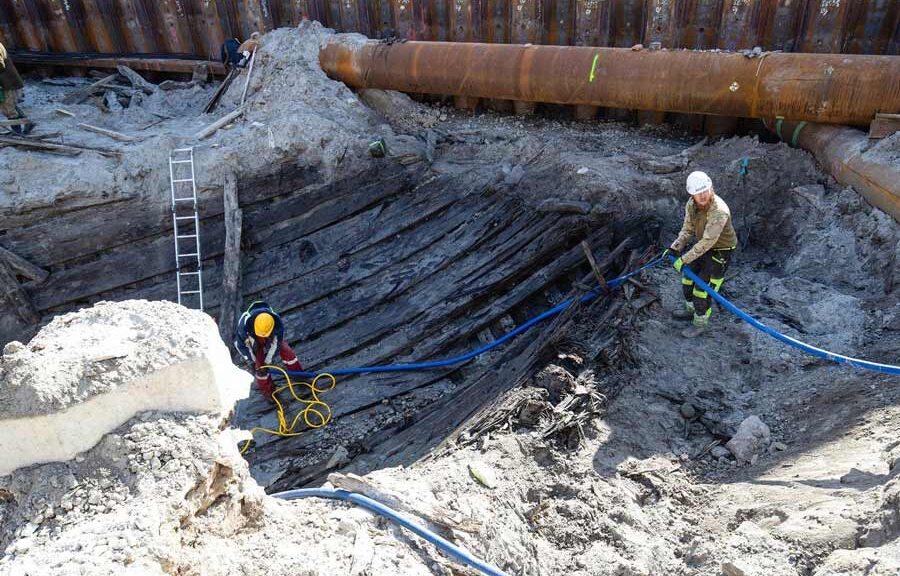700-Year-Old Ship Found In Surprisingly Good Condition In Estonia
An 80ft longship, thought to be 700 years old, was unveiled amidst construction work in Tallinn. The ship was reportedly used by a medieval commercial and defence alliance named the Hanseatic League that stretched across seven modern-day nations in northern and central Europe.


The League went to war with Denmark and was known to have sacked Copenhagen off Copenhagen, compelling the then king, King Valdemar IV, to give up about 15 per cent of his profits gained from Danish trade via a peace treaty.
One of the renowned archaeological finds of the Hanseatic League is the Bremen Cog, discovered in 1962 in Germany. Per Mihkel Tammet, an archaeologist, the Estonian find is simply as impressive. He also added that it is significantly good when compared to the Bremen Cog.
The vessel is 24 meters in length and nine meters in width. The boards are intact up to three meters from the ship’s bottom.
Archaeologists have found wool material used for packing; they have also discovered tools and fragments of medieval leather shoes.

Currently, excavations are going on and archaeologists hope to discover more. Experts have worked out the analysis of the wood and have concluded that the wreck is from 1298. This makes it 82 years older than the Bremen Cog.
This vessel was discovered about 1.5 meters underground, near the harbour in the capital city. It was built with 24-meter-long oak logs and then, sealed carefully with tar and animal hair. This is also not far from what once used to be the Härjapea River’s mouth. But the waterway is now absent.
Tammet was called on for investigating the site after a historical wreck was noticed about 50 meters away in 2008. Experts are hopeful that more discoveries were on the way, given that the area used to remain in the water.
He mentioned that the area was under the sea even in the 18th century. Almost 800 years ago, there were about two meters of water there.
An archaeologist associated with the Tallinn city government, Ragnar Nurk, was called by Tammet soon after the stunning discovery. Nurk said that the wreck has to be removed from its current position to permit the construction work. He added that there are two options: it will either be taken to the maritime museum or Tallinn Bay’s wreck preservation spot near Naissaar Island.
The Hanseatic League, popular as Hansa, was formed in German merchant communities overseas and German towns in the north, to facilitate trade. With time in the Baltic, a virtual monopoly over maritime trade was established.
The cog was one of the main vessels in use. This is because it had ample cargo space, a flat bottom that helped access shallow waters, and needed too many men to operate.
